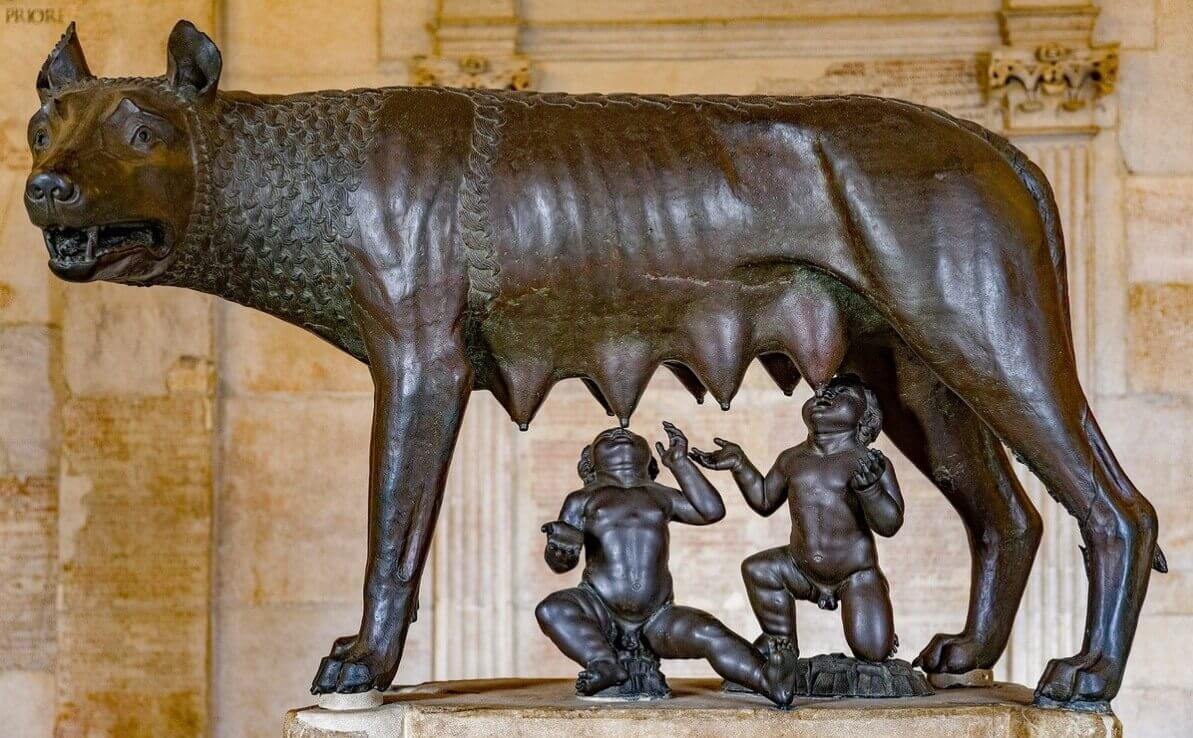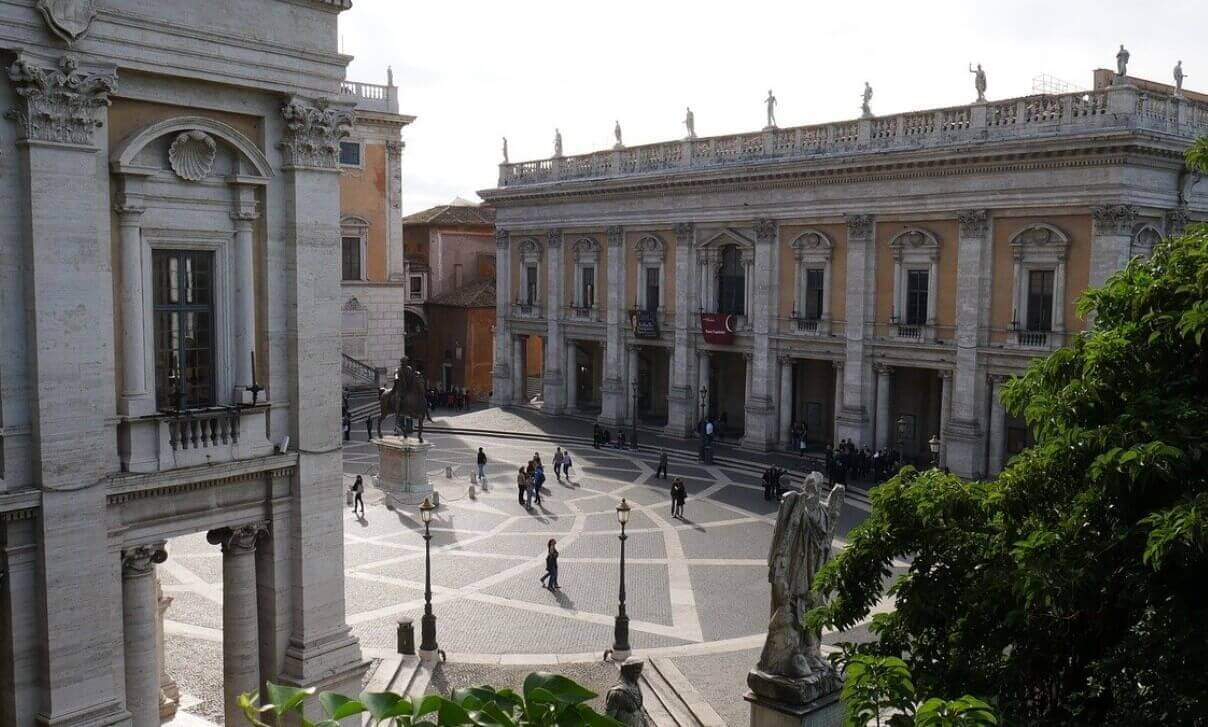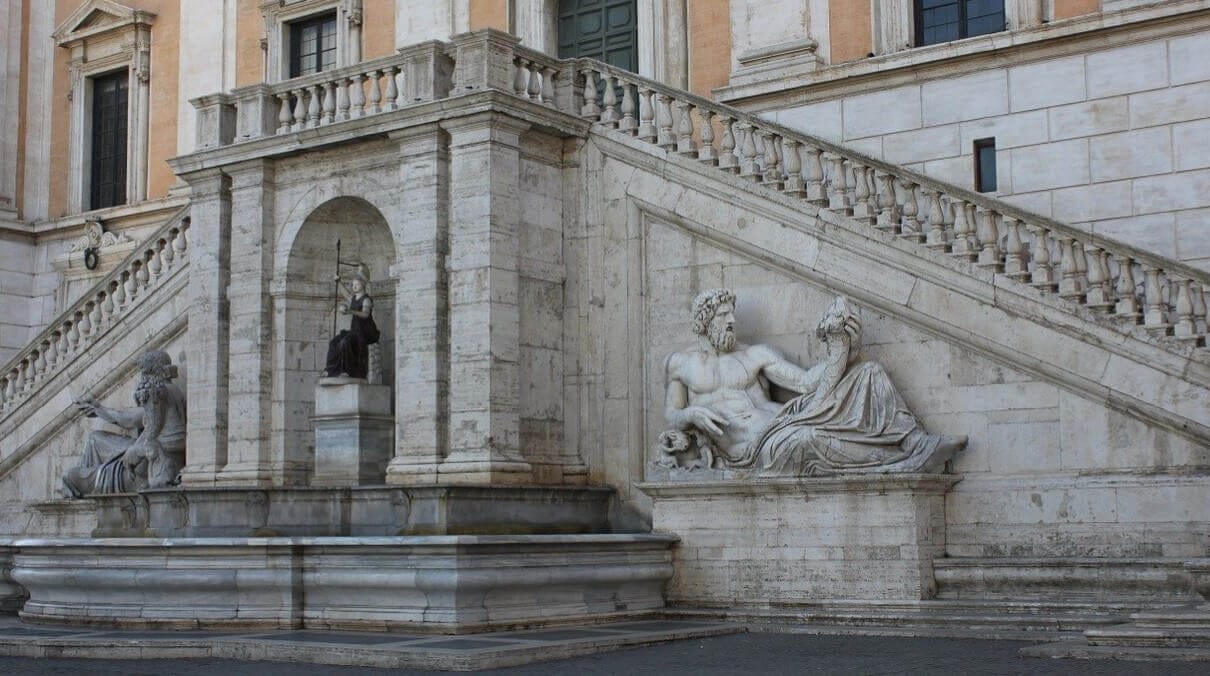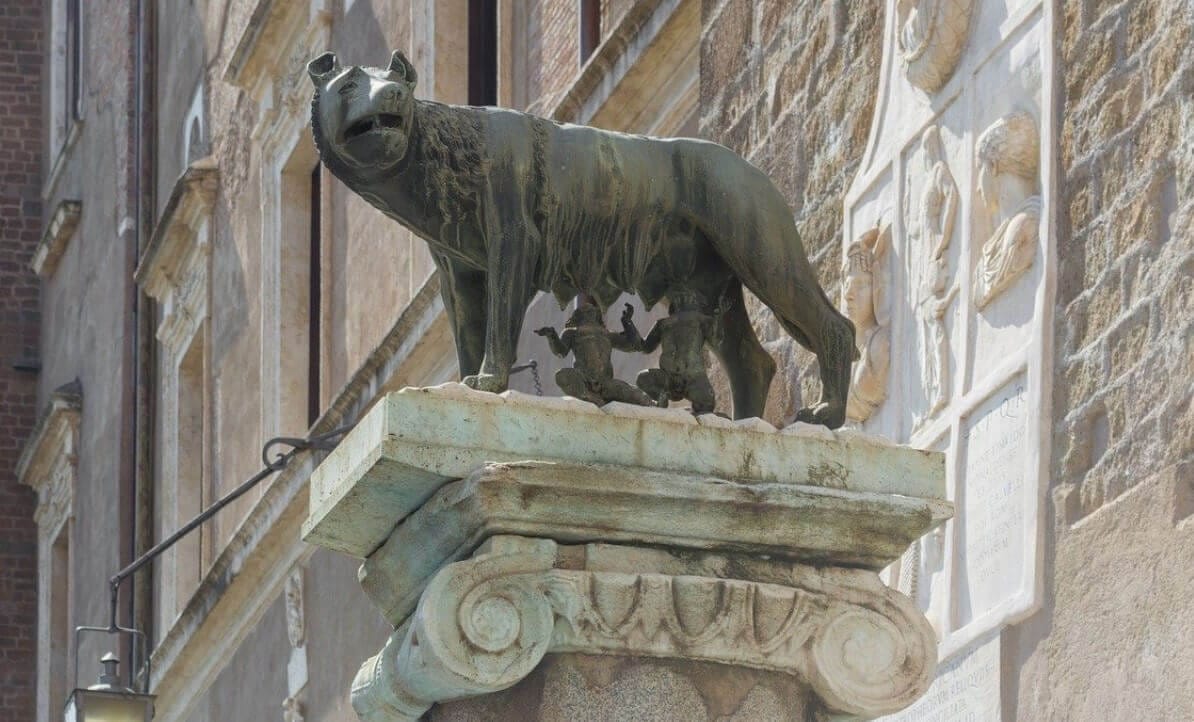
Capitoline Museum in Rome: Entrance Fee & Famous Rooftop Cafe
Consisting of three buildings surrounding the Piazza del Campidoglio, a visit to the museums will open your eyes to an extensive collection of artefacts and art. Dating back to the 15th century, the works include statues, coins, Roman historical pieces, and much more.
You can get all you need to know about the Capitoline Museums Rome in this article.
Contents
- 1 Capitoline Museum History
- 2 Capitoline Museum Buildings
- 3 Use this Free guide of Rome on your mobile
- 4 What to see and do – the Capitoline Museums artworks
- 5 Why you should consider a visit
- 6 All about Romulus and Remus Characters
- 7 Getting Capitoline Hill Museum tickets
- 8 Capitoline museum Rome Opening Hours
- 9 Capitoline Museum Rome Map and how to get there
- 10 Where to eat near Capitoline Museum Rome
- 11 Frequently asked Questions
- 12 Conclusion
Capitoline Museum History

In the first half of the 16th century, Michelangelo was commissioned by Pope Paul the Third to design a square in the heart of Rome. Thus, the Piazza del Campidoglio was born. Located on the top of the Capitoline Hill, the square was a symbol of grandeur.
The design was also symbolic – facing the heart of the church in the form of St Peter’s Basilica, the square is essentially turning its back on the Roman Forum in favour of Catholicism. Within the existing square, 2 old palaces were to be restored, and one new one built. The main design was eventually finished after his death. But the striking paving took even longer….
Capitoline Museum Buildings

There were two existing structures on the site of the square when Michelangelo began his works. They were refurbished, and a third palace – the Palazzo Nuovo – was constructed.
Palazzo Senatorio
This was a 14th century building that was located on what had been known as the Tabularium – basically an archive collection for ancient rome. It then became a residence, and finally the city hall. On the current structure you can see elements of Michelangelo's work – including the staircase and part of the facade.
Palazzo dei Conservatori
This palace was built on top of an old temple of Jupiter. Michelangelo designed the renovation, including a new portico and the facade. Here, trade disputes were negotiated. Until the late 17th century the site of the palace was used for the city market.
Palazzo Nuovo
In 1603, work began on the Palazzo Nuovo. It’s basically a copy of the Palazzo Conservatori, and was made to conclude the layout of the square.
Use this Free guide of Rome on your mobile
What to see and do – the Capitoline Museums artworks
In 1471, Pope Sixtus donated a bunch of statues to the people of Rome. These statues were displayed around the Palazzo dei Conservatori at first. This began a tradition of the display of artefacts that are of significance to the Roman people. In 1734 Pope Clement XI opened the displays to the public.
Here, you can see some amazing and significant works of art, including the famous sculptures. Some of the Capitoline Museum highlights include:
- The She Wolf. This is the symbol of Rome, the animal who rescued Romulus and Remus from the river Tiber It is known as the Lupa Capitoline.
- The slightly violent Lion attacking a horse. Some bits of the sculpture date back to 300 BC!!
- 17th Century Bust of Medusa, complete with weird snake like hair.
- The remarkable 1st Century Boy With Thorn, which depicts a young boy removing a thorn from his feet.
- As you enter the courtyard of the Palazzo dei Conservatori, don’t miss the remnants of the
- Constantine Statue – including a huge big finger and a foot
- The Hall of Tapestries inside the Conservatori, as well as the frescoes
- The Great Hall in the Palazzo Nuevo, and the Dying Gaul statue.
Why you should consider a visit
The museums are deemed to be the second most important collection within Rome after the Vatican Museums. Located on the Capitoline Hill, they embody the heritage of Rome, and were the first museums opened for public use. They are key to understanding the history of Rome and its cultural and political importance through the ages.
All about Romulus and Remus Characters

If you are going to visit the She Wolf statue, it’s probably worth reading up a bit on Romulus and Remus. The image of Rome centers on these twin brothers as they suckle on the wolf. It doesn’t really matter whether the story pre-dates the founding of Rome or not. It is engrained in every Roman’s psyche and a key symbol of the city.
Rumour has it that their mother was a Vestal Virgin who was also a daughter of the king Numitor. Due to their royal heritage, the new king Amulius ordered the boys to be abandoned by the river. They were suckled on the she wolf before being rescued by a shepherd.
Getting Capitoline Hill Museum tickets
You can get your Capitoline Museum tickets online before you go here.
Regular adult ticket – €11.50
Concession – €9.50
Special rates exist for residents of the city of Rome.
Regular adult ticket plus exhibitions – €15
If you have more time to spend and want a larger culture fix, you can get the Capitoline Card for €13.50. This also includes the Centrale Montemartini.
Don’t forget, if you have a Rome Sightseeing Pass you can get the Capitoline Museum entrance fee waived! Oh, and Capitoline Museum skip the line tickets are available for those booking online in advance.
Capitoline museum Rome Opening Hours
| Days | Opening hours |
|---|---|
| Tuesday - Sunday | 9:30am - 7:30pm |
| Monday | Closed |
If you want to take advantage of free entry – the first Sunday of every month is free! However, be prepared to queue.
Capitoline Museum Rome Map and how to get there
Get your bearing in the museum with this handy map here.
To get to the Capitoline Museums you need to head for the Piazza Venezia. The Piazza del Campidoglio is located right behind it.
Metro Rome – Colosseo is the closest stop. Get off there and take the 10 minute walk to the square
Hop on Hop off Buses – They all stop at the Piazza Venezia
Rome Public Bus – The majority of the buses in Rome also go through the Piazza Venezia.
Where to eat near Capitoline Museum Rome

Need a quick bite to eat before or after your museum visit? Check out these quick food spots near the Capitoline!
Capitoline Museum Cafe
First things first – the handiest Roman place to eat is actually in the museum itself. Caffe Capitolini. This place is known for the views over the city – it is the Capitoline Museum rooftop cafe afterall – from its beautiful terrace. It serves light bites including a range of decent salads.
Cassandra
For a quick bite on the run you don’t have to sacrifice on quality. Located on Teatro di Marcello, this cafe serves epic paninis. Pick a pre-made one if you don't have time, or ask at the counter for someone to make you one of your choice, fresh.
Emanuels Food
For a quick takeaway sandwich, slice of pizza or salad, visit Emanuels food. It’s located on Piazza d’Aracoeli, just a stone throw from the museum. Watch the staff prepare your meal quickly and then enjoy it in the square!
Frequently asked Questions

When were the Capitoline museums built?
The museums were founded in the 15th century when the pope donated some sculptures. The actual buildings were renovated or made ready in the 17th century, and the museums owned to the public in the 18th century.
Where is the Capitoline museum located?
You will find the museums near the Piazza Venezia on the Piazza del Campidoglio.
Where is the she wolf statue in the Capitoline museum?
This iconic statue, which is a symbol of Rome, is located in the Palazzo Dei Conservatori.
What is significant about the Capitoline museums?
The museums house a collection of art that is important to the citizens of Rome. Culturally, the collection symbolises Rome’s power and significance through the ages.
Is the Capitoline museum free?
No, you generally will have to pay to enter the museums. There are a couple of exceptions -if you have the Roma Pass for example, or if you visit on the first Sunday of the month.
Are kids free at Capitoline museum?
Children under 6 go free! Also, the Capitoline Museum official website lists a bunch of exceptions to paying for a ticket.
Visit Capitoline museum or Borghese gallery - which one is for you?
Both of these museums are great! But, they are different. Roman sculptures in the Capitoline, or Bernini sculptures in the Borghese (plus a bunch of art). If you have limited time in Rome, perhaps the Borghese is the best - you are limited to just 2 hours in the museum. Check out our Borghese guide to help you make this decision.
Conclusion
We hope we’ve given you enough information to make your decision to visit the Capitoline Museum. If you still haven’t decided, check out the Capitoline Museum Virtual Tour here.
Otherwise, get planning the rest of your trip from or to Rome by checking out our homepage with much more information!
Fanny is a music and travel lover who has been visiting Rome since 2012. She is the founder and main editor of the Roma Pass blog and she like to share the best things to do in Rome.
